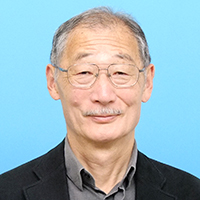
The Role and Future Prospects of Japan Concrete Institute
At the Annual General Meeting of Members held on June 22 and at the subsequent special board meeting, I was appointed President of the Japan Concrete Institute. Over the next two years, I will strive to the best of my ability to fulfill the great responsibility that has been bestowed upon me. In so doing, I look forward to the support and cooperation of all JCI members.
Established in 1965 as the Japan National Council on Concrete, the name of the organization changed to the Japan Concrete Institute in 1975, and in 2011, we became registered as a public interest incorporated association. Thanks to the untiring efforts of our predecessors over the past fifty some years, our membership has grown to about seven thousand members, and we celebrated our fiftieth anniversary in 2015.
The activities of the Institute fall into four main categories. First, we put out regular publications. In addition to publishing the Concrete Journal, we also put out Concrete Research and Technology and the Journal of Advanced Concrete Technology as collections of groundbreaking papers. The second category is the holding of our annual convention (JCI Annual Convention). This annual convention, which has been held since 1979 as a forum for the exchange of concrete engineering related information among researchers and engineers nationwide, will be celebrating its 40th anniversary this year. The third category is the Engineer Certification System. Each year, we conduct certification tests for the Authorized Concrete Engineers, Authorized Chief Concrete Engineers, and Authorized Concrete Diagnosis & Maintenance Engineers, and the numbers of such qualified and registered engineers are currently 45,556, 10,621, and 12,940, respectively. Thus sending large numbers of excellent concrete engineers out into the world is something the Institute takes great pride in. Finally, the fourth category is studies and research. Every year, research themes are publicly invited, some five of these themes are selected, a committee is formed for each of these themes, and upon completion of each study, a report is prepared and the findings are presented at a reporting session. Through this system, which was launched shortly after the Institute came into being, we have accumulated a vast body of research data over fifty some years. To make this data broadly available, we started several years ago to convert past reports into electronic form and post them online.
Incidentally, concrete engineering, which now is a mature field, might well present fewer possibilities of major breakthroughs, such as remarkable advances in material strength, compared with the past. However, furthering the promotion and dissemination of science and technology to contribute to the advancement of society requires us to be ever keener on new research. On the other hand, there is an issue that we ought to bring to the attention of society here in Japan. In contrast with Europe, where concrete dating back to Roman times is still used and beloved, Japan has low appreciation for concrete. This difference is attributable in part to the different history of concrete in Japan and Europe, and it is certainly influenced by the negative image of concrete among the Japanese as typified by the slogan "emphasis on people rather than on concrete." Thus we need to devise a strategy to improve the overall image of concrete.
Many of our members are also members of the Japan Society of Civil Engineers or the Architectural Institute of Japan, and will undoubtedly consider these as their societies of first affiliation. If we succeed in shifting the sense of belonging to civil engineering or architecture originating from each person's graduate department at the education stage to the one to concrete, the Japan Concrete Institute may well become your society of first affiliation. The day JCI becomes a place where we can all identify and feel solidarity as concrete engineers, the goal of the Institute, which was founded with the aim of bringing together civil engineering and architecture, will have been achieved. I am prepared to make every possible effort to achieve this goal.
Manabu YOSHIMURA
28th President
Japan Concrete Institute







